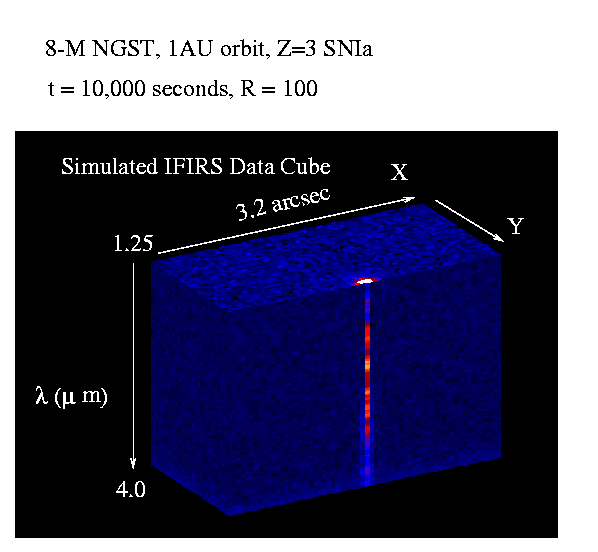

The following images represent tiny pieces of IFIRS data cubes.
In this example a cube of 64 x 64 spatial elements x200 spectral elements
was simulated - only 0.02% of the entire cube! The x and y coordinates
(space) are indicated on the top surface of the cube, and the z direction
(wavelength) runs down the side of the cube.
A distant supernova at a redshift of 3 is located at pixel (32,32). The image below shows the 64x64x200 cube sliced in two, with the cut passing through the center of the supernova. The image of the supernova is visible on the top plane as a white spot. The top of the cube depicts a broad-band 1.25 - 4.0 micron image obtained in a integration time of 10,000 seconds. Each spatial pixel is 0.05 arc seconds, so that the long edge of the cube is 3.2 arc seconds wide.
Here is a simulated data cube. In the slice revealed by this cut, the supernova spectrum is represented by the red stripe. The different shades of red reveal absorption bands which are characteristic of a supernova spectrum. The line plot shows the noisy, resolution-degraded extracted spectum together with the spectrum of SN 1989M for comparison. This demonstrated that this spectrum could easily be used to identify the object as a supernova.
The speckled pattern on the surface of the cube is due to the various noise sources present: